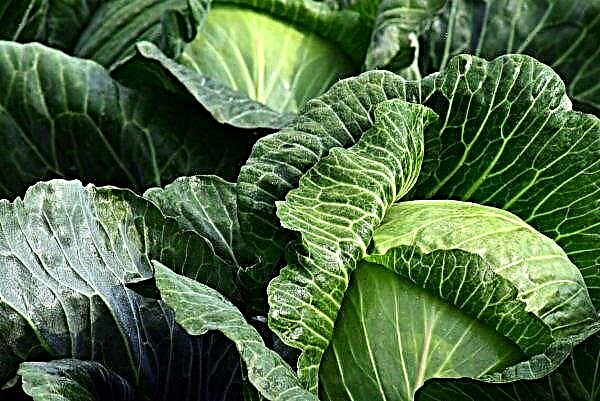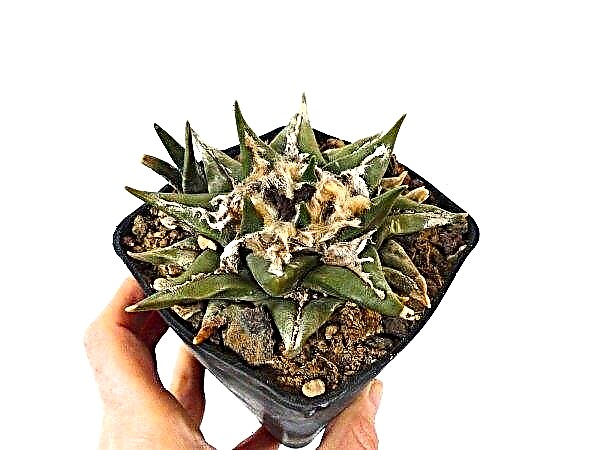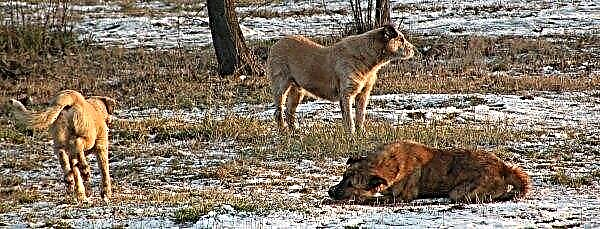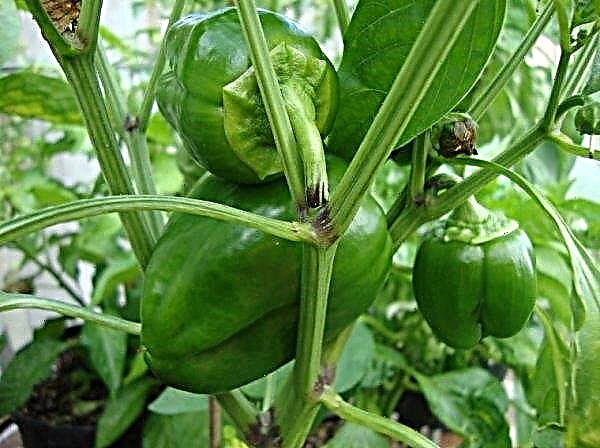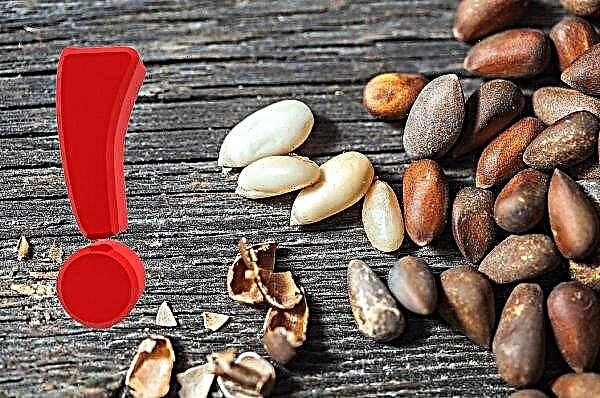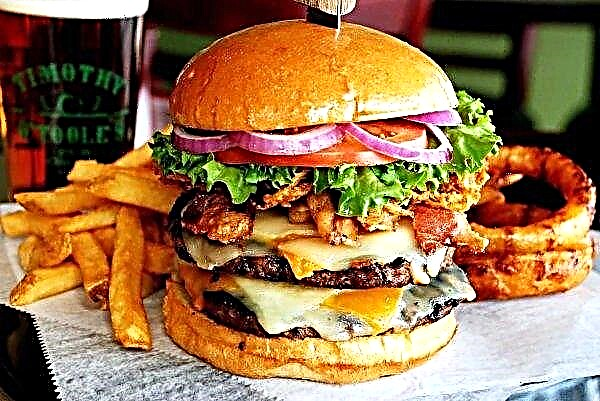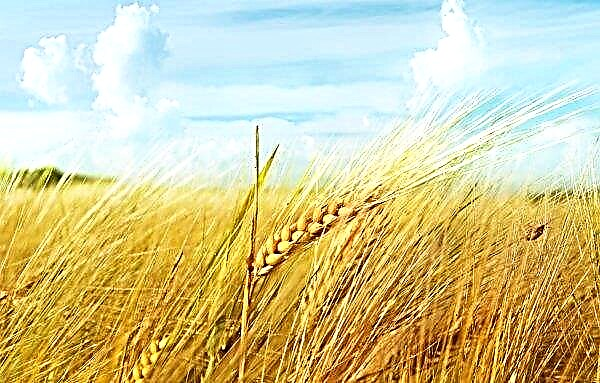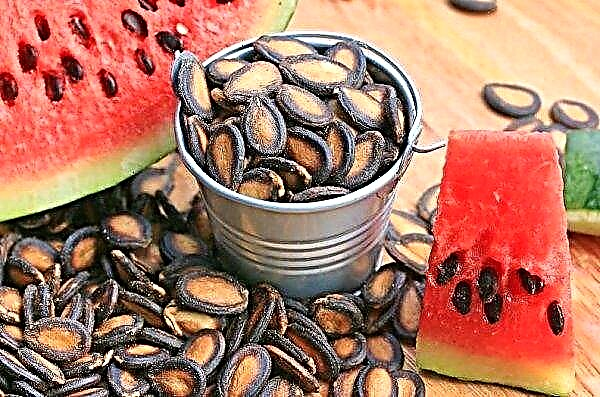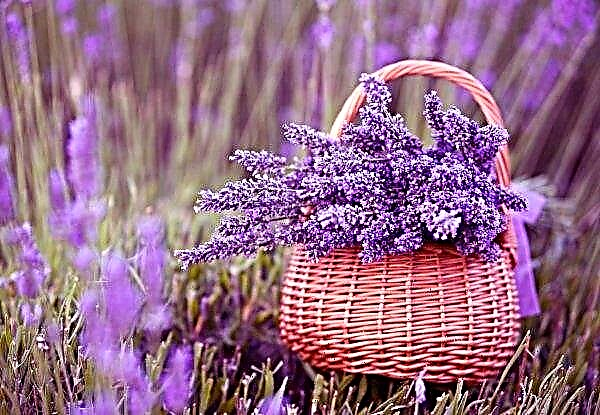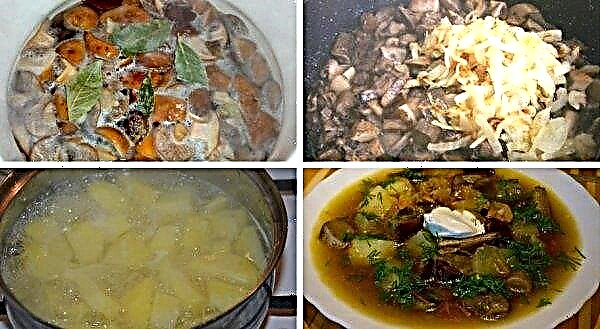People used to hear about carrier pigeons from ancient times, when they were the only means of communication. Today, their services are no longer in demand, but they continue to breed these birds because of their attractive appearance, sports qualities and other advantages of representatives of different breeds. We invite you to learn more about these amazing birds, about the principles and features of their content.
The history of the origin of carrier pigeons
Historians found the first mention of carrier pigeons in the Attic letters found on the territory of Roman, Greek, Egyptian and Persian settlements, which existed long before our era. This type of communication achieved particular development during the reign of Egypt in Nur Ad-Din in 1146–1173: in those days, a pair of good birds cost 100 dinars. Later, pigeons won the favor of people in 1572 (during the capture of Haarlem, the Netherlands) and in 1574 (during the capture of Leiden, South Holland).
Did you know? Hamsters and street pigeons have a lot in common: when there is no more space left in the stomach, the birds fill their goiter with food, making reserves for the future. This "bag" is divided into two parts, so first the left part is filled with food, and then the right compartment.
Until 1832, “flyers” were involved as liaisons between brokers, financiers, and people involved in the sale and purchase of securities on the market. In addition, at the beginning of the 19th century, the Dutch government also organized a civil-military system of pigeon mail, which used birds that came to the islands of Java and Sumatra from Baghdad. In the twentieth century, pigeons played a role in the conduct of hostilities during the First and Second World Wars, and were also used as postmen by reporters from the Reuters international news agency. They delivered letters faster than vehicles, for which they were valued not only by foreign but also by domestic correspondents.
In the twentieth century, pigeons played a role in the conduct of hostilities during the First and Second World Wars, and were also used as postmen by reporters from the Reuters international news agency. They delivered letters faster than vehicles, for which they were valued not only by foreign but also by domestic correspondents.
Today, representatives of various breeds of carrier pigeons are used only when organizing sports: for example, in 1996 in Slovakia they released pigeongrams dedicated to the Summer Atlantic Olympics. They are also bred by enthusiasts who value birds for their dedication to their home and attractive appearance.
How do pigeons determine where to fly?
According to scientists, the pigeons have a special instinct that allows them to accurately find their way home. The mechanism of “homing” is not fully understood, but there is an assumption that low-frequency infrasound waves that are not accessible to human hearing help birds to navigate in space. Based on this point of view, pigeons know where to return to them, thanks to the “sounding” of the landscape, since each object on the Earth's surface has its own frequency. The results of ornithological studies showed a very complex structure and development of the brain of pigeons. The principle of its operation can be compared with a small computer capable of reading, processing and saving large amounts of information. Sources of data are all the senses of the bird, but especially the eyes. Their structure allows you to filter out unnecessary objects and focus only on the main objects that remain in memory. It turns out that the pigeons return home according to the map created in their head, which is supplemented by personal impressions of flying over a particular area: birds always understand where they are approximately and which way to fly next.
The principle of its operation can be compared with a small computer capable of reading, processing and saving large amounts of information. Sources of data are all the senses of the bird, but especially the eyes. Their structure allows you to filter out unnecessary objects and focus only on the main objects that remain in memory. It turns out that the pigeons return home according to the map created in their head, which is supplemented by personal impressions of flying over a particular area: birds always understand where they are approximately and which way to fly next.
Another interesting feature of pigeons is the presence of a certain “receptor magnet” on their beaks, thanks to which even the just born bird knows how to determine the strength of the magnetic field on the Earth’s surface, and, in particular, near its own nest. Read information is forever stored in the memory and also helps the bird in search of the way home.
This feature works regardless of the breed, although in decorative species these “skills” are not as developed as in sports pigeons. If you look at how far carrier pigeons can fly, then, according to studies, most birds could not overcome more than 1,100 km. Therefore, the closer the addressee and the addressee are to each other, the more likely they are to establish a communication system without thinking how much their pigeon can fly as much as possible.
Rock characterization
Among the many known breeds of carrier pigeons, only a few are considered the most popular:
- Russian
- German
- English
- Belgian
- Czech.
Each variety has its own unique features.
Russians
Representatives of this breed of pigeons are widespread in Russia. They are distinguished by their attractive appearance with graceful body lines. Legs and neck are long, head is small, with a sharp beak and orange-red eyes, with white bordering. On the elongated wings and tail there is a bend that helps birds to maneuver during flight. The legs of Russian pigeons are elongated and completely bald. The main color of the plumage is white, although mottled individuals are sometimes found.
German
The ancestors of this species of carrier pigeons are representatives of the English and Dutch breeds, from which the birds were transferred to the ability to fly quickly and to no less rapid growth and development. With a relatively small body size, the neck of German pigeons has a longer length. The head is medium, but the beak on it is very shortened and has a characteristic growth that covers it almost to the tip.
Did you know? The first association of breed lovers was created in Leipzig (Germany) as early as 1905, but already in those days they could be called more decorative than postal.
From the side it may seem that the bird has a hunchbacked nose and no beak at all. In addition, the birds also have a shortened tail, although the wings are of medium size and tightly fit to the body. The legs are long and, except for the red fingers, densely feathered. The color of the plumage can have a variety of shades, but in most cases it:
- pure white;
- bluish;
- brown;
- reddish;
- yellowish.
 If the owner is important not only the flight qualities of birds, but also how they look, then you should pay attention to German pigeons.
If the owner is important not only the flight qualities of birds, but also how they look, then you should pay attention to German pigeons.English
Pigeons, which are most suitable for modern breed standards, were bred in the middle of the 19th century and since then have been actively bred in many private pigeon houses. In appearance they are easily confused with ordinary yard birds, but still they have some characteristic features of the exterior. The ancestors of English pigeons were bred in the XIV century, but since that time their appearance has undergone a lot of changes.
The head of the birds is small, the body is large, with a hard plumage. The eyes are large, one might even say more than other pigeons, they have eyelids on them. The beak is straight, thick, with characteristic growths resembling warts. Legs of medium length, partially feathered. The plumage color has several variations and can be gray, mottled, white or black. Sometimes chestnut and almost yellow pigeons are found.
Belgian
Representatives of this breed are also considered one of the old "postmen" whose characteristics were improved in the 19th century by crossing with pigeons of the breed Homer and Turbite. The body of the “Belgians” is distinguished by rounded shapes, but the main distinguishing feature of the breed is the well-defined chest part. The neck and head are medium sized, legs are short. The tail is narrow with few feathers. The wings fit snugly on the back and are distinguished by a shortened feather structure. The color of the plumage can be the most diverse: from gray and gray to red, black, brown and even yellow.
The tail is narrow with few feathers. The wings fit snugly on the back and are distinguished by a shortened feather structure. The color of the plumage can be the most diverse: from gray and gray to red, black, brown and even yellow.
Czech
Czech pigeons do not fly long distances, but many consider them to be the best messengers. They have an excellent appearance and are characterized by good obedience, so they are often represented at all kinds of exhibitions. These birds have a long neck, a short tail and a relatively long beak with a growth. The head is medium in size, the plumage is smooth and snug against the body. The legs are massive, the wings are long (fly feathers reach the base of the tail). The color of plumage can vary from pure white to grayish and even reddish.
The head is medium in size, the plumage is smooth and snug against the body. The legs are massive, the wings are long (fly feathers reach the base of the tail). The color of plumage can vary from pure white to grayish and even reddish.
Important! Compared to other "postmen", Czech pigeons require more physical activity, as they are much more active.
Growing carrier pigeons at home
In terms of care, carrier pigeons are not too different from their relatives of other breeds, however, the owner needs to know about some features of their maintenance and breeding.
Conditions of detention
Like many other pets, pigeons need a warm and dry house, with regular meals and the possibility of walking. Different pigeons can differ in individual design features, but in any case they must meet the following requirements:
- Bird density - at least 0.5 m² per one pair of birds, and before placing the pigeons, it is advisable to divide the room in advance into separate sections with built-in cells of sufficient depth (about 20 × 40 cm).
- Features of doors and windows for the departure of birds. A passage with a height of 150–180 cm and a width of 55–70 cm will be sufficient for a person, but it is advisable to make the door itself double: from the outside it should be a solid wooden or metal cloth, and from the inside it should be a grid or mesh. The last option (lattice doors) is great for the summer season. The size of the windows for birds depends on the breed, but on average it does not exceed 25 × 20 cm (in each compartment there should be at least two such openings, at a height of not less than 11.5 m from the floor surface).
- The floor in the room is best made from tightly laid boardswhich, to protect against dampness, raise pigeons above the bottom level to a height of at least 25 cm.
- The rooftop roof can be of two types: single-slope and double-slope, but must be covered with roofing material or protected from moisture in another way (the most convenient slope of the roof is a ratio of 1:10 in comparison with the covered area).
- Ventilation system. Usually it is represented by a supply hole located at a height of 1.15 m from the floor (covered with a net) and an exhaust hole (made at the highest point of the roof). In both cases, such windows should close well during colds.
- Lighting. Before the competition or during the breeding season, daylight hours must be increased to 16-17 hours a day, so additional light sources will have to be installed in the pigeon to compensate for its lack in the winter season.
- Temperature. Ideal for representatives of most breeds will be temperature values within +20 ° C, decreasing in winter to +5 ° C. In extreme cases, zero temperature is allowed, but a prolonged "minus" should be avoided if possible. For this purpose, you need to think about the heating system in advance and insulate the pigeon as much as possible with foam and mineral wool.
- Humidity. Ideally, this figure should not be lower than 65%, therefore, in the summer, to increase the humidity inside the house, you can periodically water the roof with hose water.
- Feeding troughs and drinking bowls. There are no special requirements for these products, the main thing is that all pigeons are placed nearby and can get food. Typically, the products are made in the form of a long pallet with separation into compartments with the help of stakes, between which each bird can stick its head in and take food. Drinking bowls can be installed and purchased, for example, plastic, with the same divisions into compartments.
Important! When arranging a house, do not forget to organize a runway - from there pigeons can take off and then land back before entering the dovecote. This may be a small sheet of plywood or other durable material mounted on the outside of a bird house.
Feeding
For well-being and high activity, pigeons should receive food that will provide them with a supply of vitamins and minerals. Each breed has its own nuances of the feeding process, which in the case of “postmen” are based on moderation. In no case should the birds be fat, but at the same time they must have the strength to overcome the required distances. The main components of the diet of carrier pigeons in the summer can be:
The main components of the diet of carrier pigeons in the summer can be:
- wheat, corn, oats (not more than 10% of the total amount of feed supplied);
- peas (20%);
- vetch (10%);
- millet (20%);
- barley (20%).
In addition, young greens will be a very useful part of the menu during the summer season. In the warm season, birds molt, so the diet should be with a sufficient amount of protein. Good sources of protein are barley, oats, at least wheat, and rape and colza can be used as additional fertilizing. As a green mass, the leaves of young cabbage are perfect for pigeons. A day, one individual eats about 40-50 g of different foods, divided in summer into 3 meals.
Did you know? When breeding pigeons, owners use marking of individuals with rings so that they can be distinguished from other birds.
In winter, the diet of carrier pigeons changes, due to the lack of greenery and the relevance of vitamin and mineral supplements. The amount of protein in feed should be reduced - this will prevent possible unwanted egg laying. Therefore, pigeons should not be given legumes, and barley and oats will help to replace them. You can increase the nutritional value of feed with the help of cereals and potatoes. In proportional proportion, the daily menu of “postmen” in winter will look like this:
- barley (40%);
- oats (40%);
- lentils (10%);
- crushed corn (10%).
 For the well-being of one individual, only 30–40 g of such a mixture per day will be enough, and if you want to maintain softness and improve the appearance of plumage, you can mix 3-4 g of flax or rapeseed with it. The number of winter feeds is reduced to two times: at about 8 o’clock in the morning and 5 o’clock in the evening.
For the well-being of one individual, only 30–40 g of such a mixture per day will be enough, and if you want to maintain softness and improve the appearance of plumage, you can mix 3-4 g of flax or rapeseed with it. The number of winter feeds is reduced to two times: at about 8 o’clock in the morning and 5 o’clock in the evening.Important! At any time of the year, pigeons must have access to clean and fresh water.
Care and hygiene
The appearance of pigeons and their health largely depend on compliance with sanitary standards in the house. Ideally, a small cleaning should be done daily, sweeping leftover food and litter from the floor, and more thorough disinfection of the dovecote can be postponed to the end of the week. General cleaning of the premises with the disinfection of all surfaces should be carried out 1-2 times a year, with the temporary relocation of birds to another home (preferably before the onset of cold weather), and provides for the following:
General cleaning of the premises with the disinfection of all surfaces should be carried out 1-2 times a year, with the temporary relocation of birds to another home (preferably before the onset of cold weather), and provides for the following:
- cleaning feeders and drinking bowls, their treatment with an alcoholic solution of iodine or other disinfectant solution;
- dust removal and further treatment with a wall and ceiling disinfector;
- floor cleaning with complete replacement of the existing litter;
- whitewashing lime with the treatment of all cracks and small grooves in the walls;
- disinfection of inventory;
- airing the room.
When all the actions have been successfully completed, you can return the pigeons to their previous place of residence - the main thing is that by this time the dovecote is ventilated and all surfaces dry. If the birds even temporarily have nowhere to resettle, then for the time of cleaning they can remain indoors. However, in this case, instead of using many special disinfectants, you will have to limit yourself to whitewashing lime.You can disinfect drinking bowls and feeders by boiling several times a month.
Important! Covering the floor with new clean litter, it is advisable to add wood ash, grated tobacco leaf or dried wormwood under it, which will drive away the parasites.
Also, a good solution for cleaning will be soda dissolved in boiling water, after the application of which it is necessary to rinse the equipment again under clean running water. As for the birds themselves, for preventive purposes it is advisable to inspect them every day, mainly during meals. Healthy birds fly quickly to feed, and patients sit languidly off to the side with their heads drawn into their shoulders and wings lowered. Of course, such individuals must be immediately isolated.
Training and teaching birds
Mail pigeons are perfectly trained, without which the owner can not do if he wants the birds to fly away from home and regularly return back. You can start the process of upbringing from the age of four months, when the pigeon is completely covered with constant plumage. It is advisable to devote the first lessons to studying the area around the dovecote and only after several weeks of successful flights can we move on to the more difficult task: returning home from great distances.
Important! To maintain the endurance of the “postmen”, time spent in closed baskets should be minimized. For this reason, experienced breeders try to transport birds from place to place as quickly as possible.
In the first year of study, it is not recommended to take the bird further than 300 km from the house. Moreover, if the pigeon’s route provides a distance of more than 100 km, then the owner needs to include one day for the pigeon’s rest in the flight plan. The most suitable time for training is the period from mid-spring to October, when the weather is warm and clear, with light wind. Once the pigeon gets used to flying in such conditions, you can complicate the task by organizing training on a foggy or windy day. If the first experience of such flights is unsuccessful, then it will be necessary to exclude classes for several days so that the bird recovers and regains strength. Each feathered success should be encouraged by the owner, and further tasks should only become more difficult. The same instructions will quickly get boring to the pigeons, and they will cease to obey, so at least once a month it is worth releasing birds on the full route. It is advisable to release pigeons in the morning, when all the processes in their body correspond to the productive occupation as much as possible.
If the first experience of such flights is unsuccessful, then it will be necessary to exclude classes for several days so that the bird recovers and regains strength. Each feathered success should be encouraged by the owner, and further tasks should only become more difficult. The same instructions will quickly get boring to the pigeons, and they will cease to obey, so at least once a month it is worth releasing birds on the full route. It is advisable to release pigeons in the morning, when all the processes in their body correspond to the productive occupation as much as possible.
Frequent departures after dinner can undermine the health of birds, so it is recommended to avoid them. No matter how much you tame and train your “postmen,” the success of this process will also depend on the owner’s personal attitude to the birds, therefore, when considering how to best teach them, choose only humane methods, because sometimes birds are trained by excessive loads.
Disease prevention
Pigeons are characterized not only by purely bird diseases, but also infections that can be transmitted to humans (for example, ornithosis or trichomoniasis). In this regard, any house owner should adhere to the following preventive requirements:
- perform regular cleaning and disinfection of dovecote;
- use quality feed;
- quarantine for new members of the bird family (at least 10 days);
- make preventive injections against Newcastle disease (in 35–45 days), salmonellosis (3 times a year, by drinking the vaccine for 10 days), trichomoniasis (1 time in three months), smallpox (1 time per year);
- perform deworming of birds (2 times a year);
- use vitamin and mineral supplements during molting, during increased loads, or simply with the active growth of young animals (you can add to food 1 time per week);
- use immunostimulating drugs (for example, Nefrogep or Perpulmin).
 Together, these actions will allow you not to think about ways to treat pigeons, and if the birds catch the infection, their body will quickly cope with it. This applies to representatives of any breed, regardless of the conditions of its selection and requirements for conditions of detention.
Together, these actions will allow you not to think about ways to treat pigeons, and if the birds catch the infection, their body will quickly cope with it. This applies to representatives of any breed, regardless of the conditions of its selection and requirements for conditions of detention.

